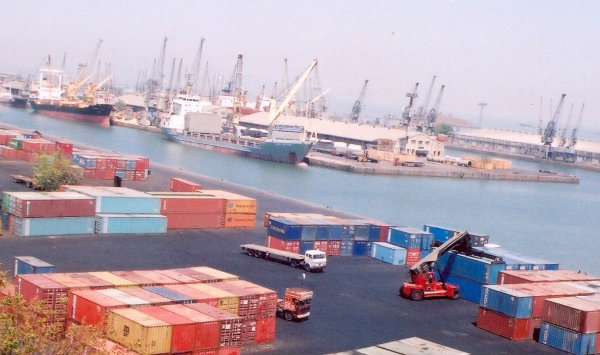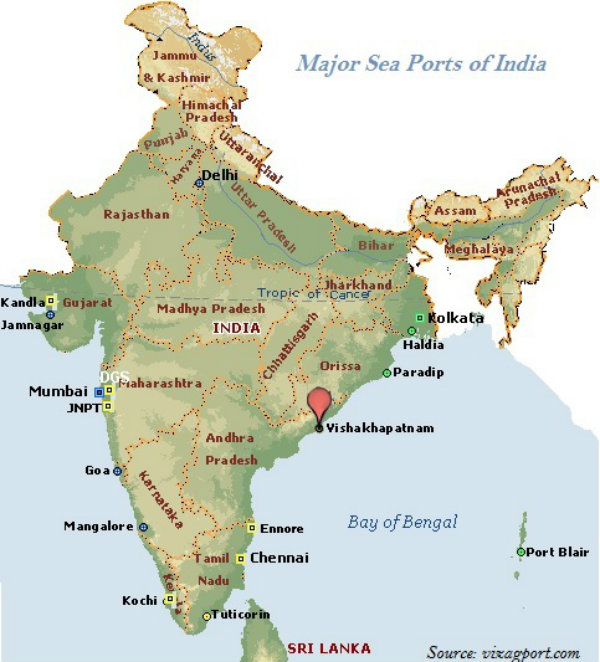
- Geography India - Introduction
- Geography India - Physical Aspect
- Geography India - Drainage System
- Geography India - Climate
- Geography India - Natural Vegetation
- Geography India - National Forest
- Geography India - Wildlife
- Geography India - Soil
- Geography India - Land Resources
- Geography India - Agriculture
- Geography India - Mineral Resources
- Geography India - Energy Resources
- Geography India - Industry
- Geography India - Transport
- Geography India - Communication
- Geography India - Foreign Trade
- Geography India - The People
- Geography India - Settlement
- Geography India - Migration
- Regional Development
- Geography India - Disasters
- Geography of the World
- Geography World - Introduction
- Evolution of the Earth
- Geography World - Climate
- Geography World - Transport
- Geography World - Communications
- Geography World - Population
- Human Settlement
- Human Development
- International Trade
- Geography Useful Resources
- Geography - Online Quiz
- Geography - Online Test
- Geography - Quick Guide
- Geography - Useful Resources
- Geography - Discussion
Geography India - Foreign Trade
Introduction
In 1950-51, Indias external trade was worth Rs.1, 214 crores, which rose to Rs. 22, 09,270 crores in 2009-10.

Though an increase has been registered in floricultural products, fresh fruits, marine products, and sugar, there has been a great decline in the exports of traditional items such as coffee, spices, tea, pulses, etc.
Engineering goods, gems, and jewelry contribute to a larger extent to Indias foreign trade.
With the Green Revolution in 1970s, the import of food grains declined, but it was replaced by fertilizers and petroleum.
Other major items of Indias import include pearls and semi-precious stones, gold and silver, metalliferous ores and metal scrap, non-ferrous metals, electronic goods, etc.
Trading Partners
The share of Asia and ASEAN in total trade (with India) is increased from 33.3 per cent in 2000-01 to 57.3 per cent in the first half of 2011-12, while that of Europe and America fell from 42.5 per cent to 30.8 per cent respectively.
The USA, which was in first position in 2003-04 has been relegated to third position in 2010-11.
The UAE is becoming Indias largest trading partner, followed by China (2010-11).
Sea route is the major trading route for the Indian trade.
Sea-Ports
At present, India has 12 major ports and 185 minor or intermediate ports.
The 12 major ports handled about 71 per cent of the countrys oceanic traffic in the year 2008-09.
The capacity of Indian ports increased from 20 million tons of cargo handling in 1951 to more than 586 million tons in 2008-09.
Kandla Port located in the Gulf of Kachchh, on the west coast of Gujarat has been developed as a major port.
Kandla port is specially designed to receive large quantities of petroleum and petroleum products and fertilizer.
Mumbai has a natural harbor and it is the biggest seaport of the country.

Mumbai port is situated closer to the general routes from the countries of Middle East, Mediterranean countries, North Africa, Europe, and North America where the major share of countrys overseas trade is carried out.
Jawaharlal Nehru Port at Nhava Sheva, Maharashtra was developed as a satellite port to relieve the pressure on the Mumbai port.
Jawaharlal Nehru Port is the largest container port in India.
Marmagao Port, situated at the entrance of the Zuari estuary, is a natural harbor port in Goa.
New Mangalore Port is located in the state of Karnataka; it caters to the export of iron-ore and iron-concentrates along with fertilizers, petroleum products, edible oils, coffee, tea, wood pulp, yarn, granite stone, molasses, etc.
Kochchi Port, situated at the head of Vembanad Kayal is a natural harbor port; it is popularly known as the Queen of the Arabian Sea.
Kolkata Port is a riverine port located on the Hugli River; it is 128 km inland from the Bay of Bengal.
Haldia Port is located 105 km downstream from Kolkata.
Haldia Port has been constructed to reduce the congestion at Kolkata port.
Haldia Port handles bulk cargo like iron ore, coal, petroleum, petroleum products and fertilizers, jute, jute products, cotton and cotton yarn, etc.
Paradip Port is situated on the Mahanadi delta, about 100 km from Cuttack, Odisha.
Paradip Port has the deepest harbor especially suited to handle very large vessels.
Paradip Port handles large-scale export of iron-ore.
Located in Andhra Pradesh, Visakhapatnam Port is a land-locked harbor, connected to the sea by a channel cut through solid rock and sand.
Visakhapatnam Port handles iron-ore, petroleum, and general cargo.
Chennai Port is one of the oldest ports on the eastern coast of India.
Ennore is a newly developed port in Tamil Nadu. It has been constructed 25 km north of Chennai to relieve the pressure on Chennai port.
Tuticorin Port is also an important port located in Tamil Nadu. It handles the movement of coal, salt, food grains, edible oils, sugar, chemicals, and petroleum products.
There were 19 international airports functioning in the country (February 2013); however, currently, it is 20.
Airways have the advantage of taking the least time for carriage and handling high value or perishable goods over long distances; however, it is expensive and hence not suitable for the heavy and other machinery products.